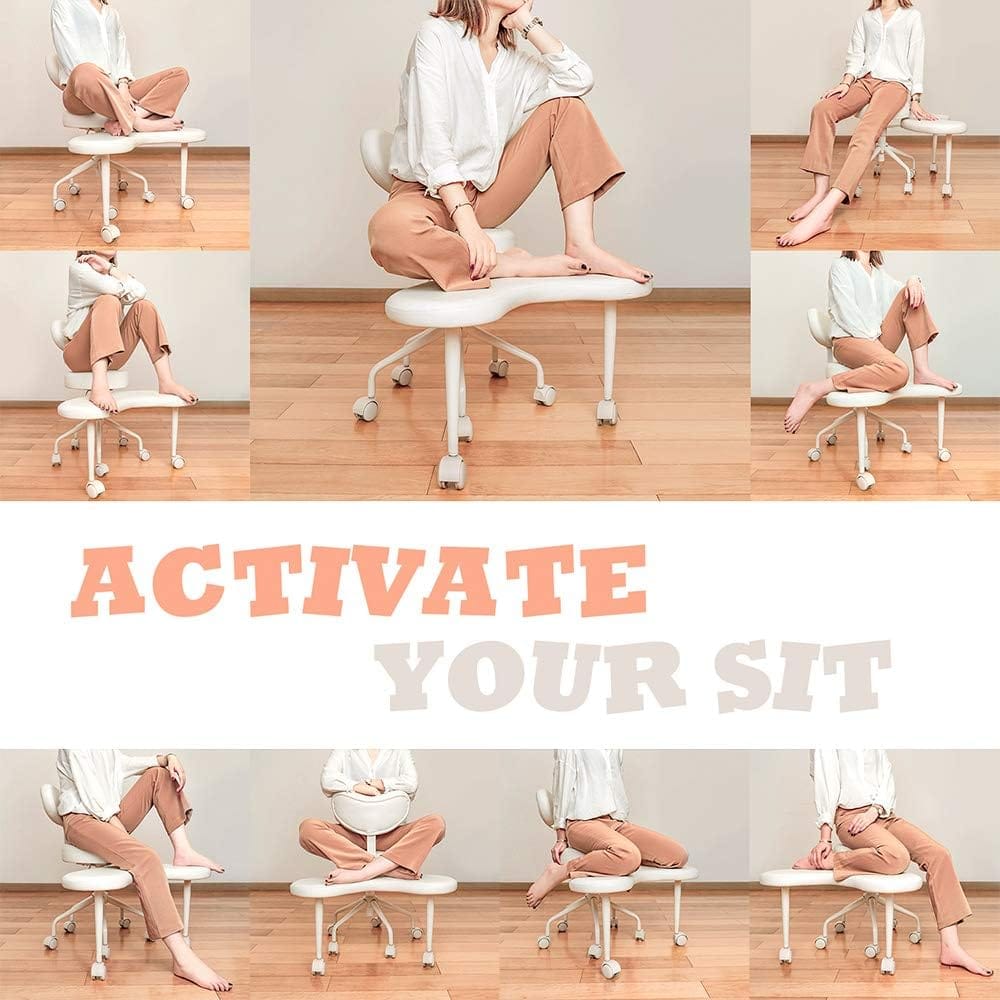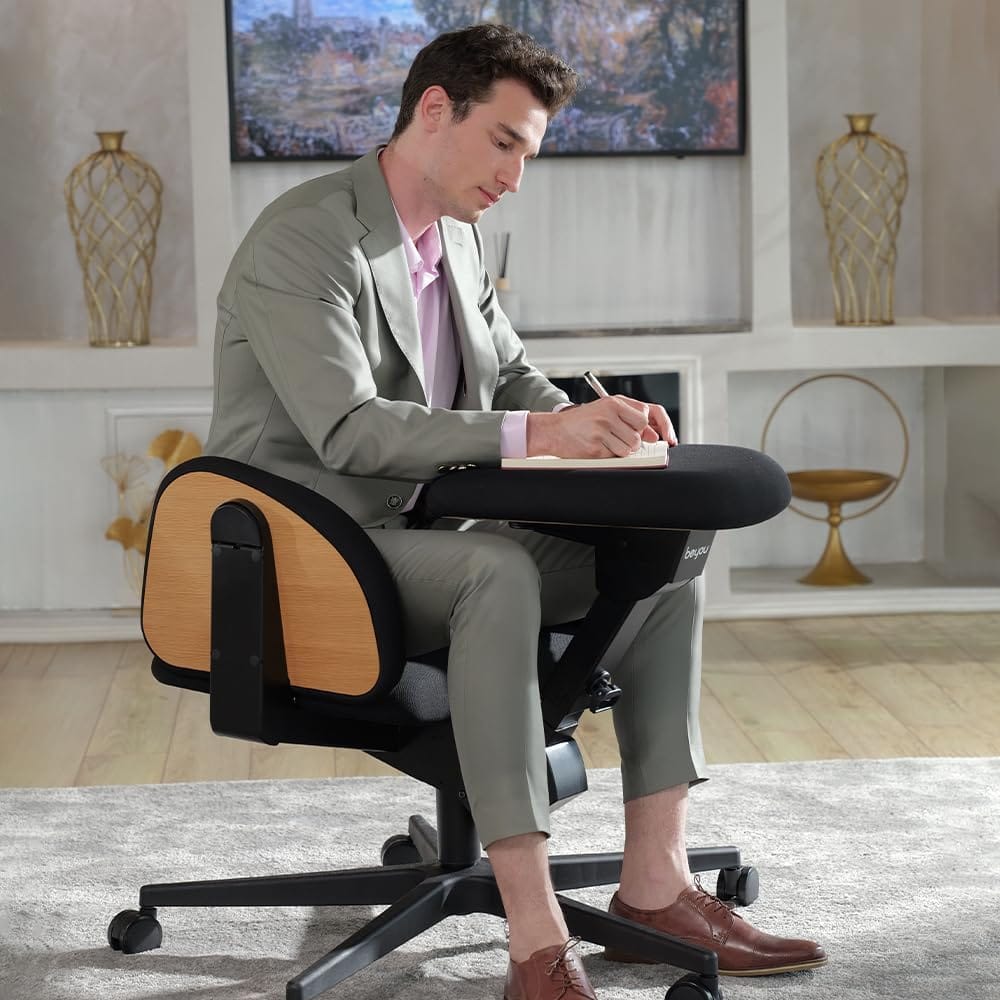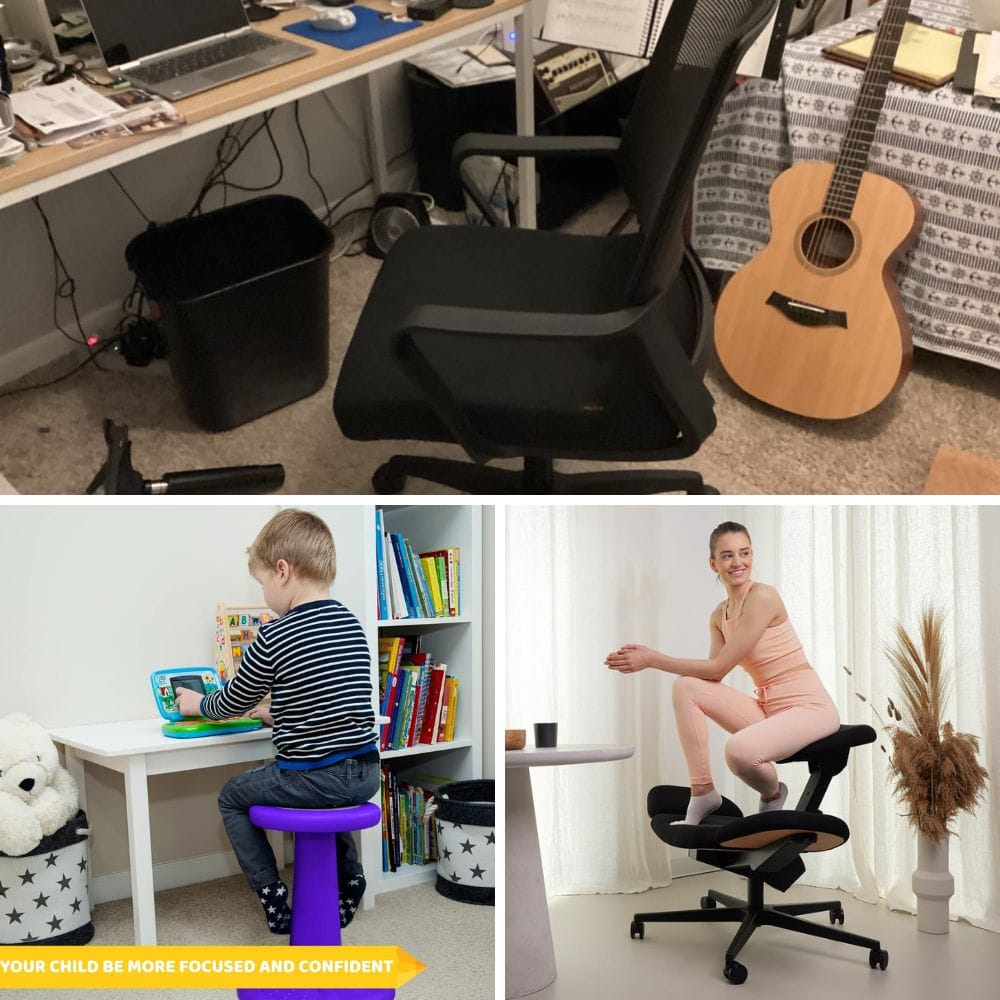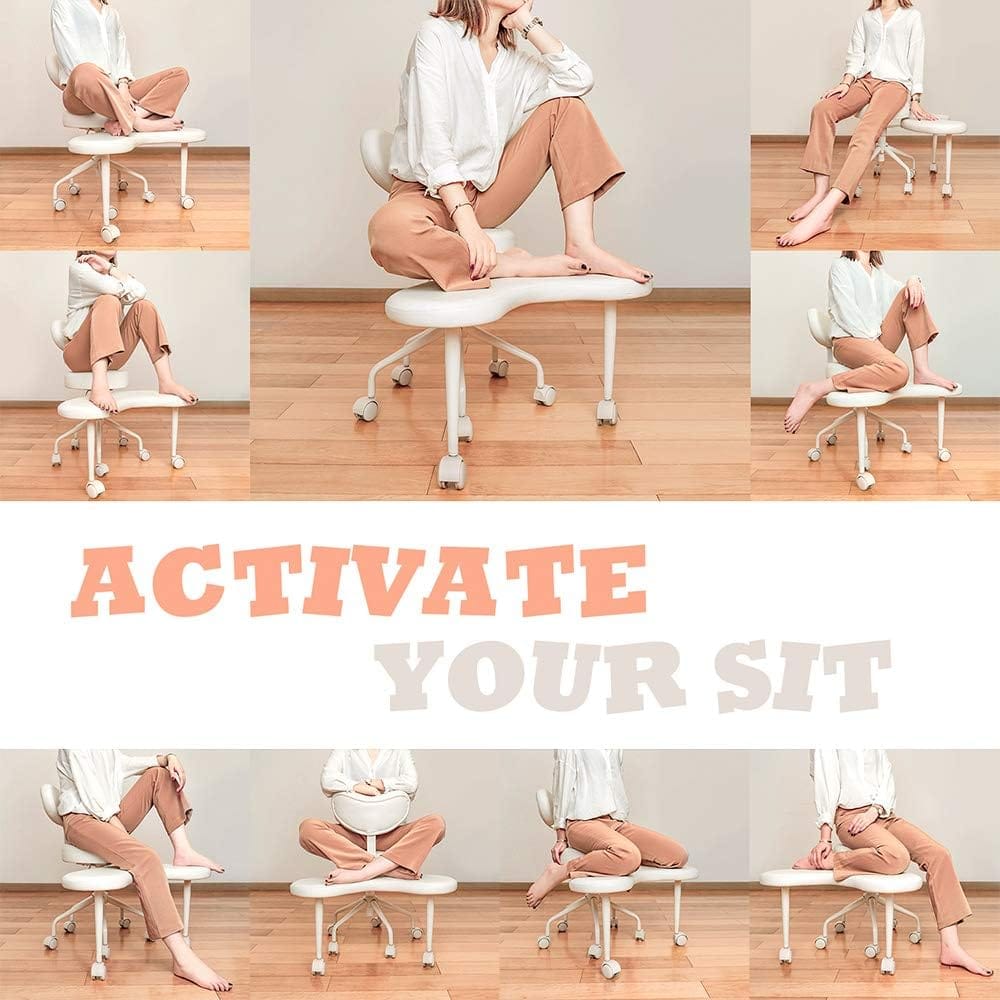Key Takeaways:
- ADHD chairs can significantly enhance focus and comfort for individuals with ADHD by promoting active sitting and offering ergonomic benefits.
- Various types of ADHD chairs, such as the Pipersong Meditation Chair and balance ball chairs, cater to different sitting preferences and needs.
- Choosing the right chair involves considering factors like seat height, lumbar support, and the ability to change positions frequently.
Introduction to ADHD Chairs

Attention Deficit Hyperactivity Disorder (ADHD) affects millions worldwide, often making prolonged sitting a challenge. Traditional chairs can exacerbate discomfort and distractibility, leading to decreased productivity. Enter ADHD chairs, designed to address these specific needs by promoting active sitting and offering ergonomic benefits.
ADHD chairs, such as the Pipersong Meditation Chair, are crafted to accommodate various sitting positions, allowing users to sit cross-legged or in other comfortable postures. These chairs aim to improve focus and comfort, making them a valuable addition to any workspace. An ADHD office chair, with its specialized design, helps manage restlessness and maintain concentration during work or study. But do ADHD chairs work? This article delves into the effectiveness of these chairs, exploring their features, benefits, and how they compare to conventional office chairs.
Understanding ADHD and Its Impact on Sitting

ADHD is characterized by symptoms such as inattention, hyperactivity, and impulsivity. These symptoms can make sitting still for long periods challenging, often leading to restlessness and discomfort. Traditional office chairs, with their rigid design, can exacerbate these issues, making it difficult for individuals with ADHD to stay focused. Choosing the right desk chair, with features like adjustability and support for alternative sitting positions, can help manage these symptoms effectively.
ADHD chairs, on the other hand, are designed to accommodate movement and promote active sitting. By allowing users to change positions frequently, these chairs help release excess energy and improve focus. This flexibility can be particularly beneficial for people with ADHD, who often need to move to maintain concentration.
The Science Behind Active Sitting
Active sitting is a concept that encourages movement while seated, engaging core muscles and promoting better posture. This approach contrasts with the static nature of traditional chairs, which can lead to discomfort and decreased productivity over time. Active sitting chairs, such as balance ball chairs and ergonomic stools, are designed to facilitate movement and improve focus.
Research suggests that active sitting can enhance cognitive function and increase productivity by allowing users to change positions and engage their muscles. For individuals with ADHD, this can be particularly beneficial, as it helps manage symptoms and maintain concentration. By promoting movement, ADHD chairs can provide a more comfortable and productive sitting experience.
Types of ADHD Chairs
Pipersong Meditation Chair
The Pipersong Meditation Chair, often referred to as the pipersong chair, is a versatile option that allows users to sit cross-legged or in other comfortable positions. Its wide seat and ergonomic design make it suitable for prolonged sitting, providing lumbar support and promoting active sitting. This chair is ideal for those who prefer a more flexible sitting experience.
Balance Ball Chairs
Balance ball chairs are another popular choice for individuals with ADHD. These chairs encourage movement and engage core muscles, promoting better posture and focus. By allowing users to bounce and shift positions, balance ball chairs help release excess energy and improve concentration.
Kneeling Chairs
Other chairs, such as kneeling chairs, are designed to promote an open hip angle and engage core muscles, reducing pressure on the lower back. These chairs encourage active sitting and can be a comfortable alternative to traditional office chairs for individuals with ADHD.
Comparing ADHD Chairs to Traditional Office Chairs
Traditional office chairs are often designed with a one-size-fits-all approach, offering limited flexibility and movement. This can be problematic for individuals with ADHD, who may find it difficult to stay focused and comfortable in a static position. ADHD chairs, on the other hand, are designed to accommodate movement and promote active sitting.
By allowing users to change positions and engage their muscles, ADHD chairs can provide a more comfortable and productive sitting experience. This flexibility can be particularly beneficial for individuals with ADHD, who often need to move to maintain concentration. In contrast, traditional chairs may exacerbate discomfort and distractibility, leading to decreased productivity.
The Role of Ergonomic Design in ADHD Chairs
Ergonomic design is a key feature of ADHD chairs, promoting comfort and support for prolonged sitting. These chairs are designed to accommodate various sitting positions, including transitioning out of a conventional primary sitting position, providing lumbar support, and encouraging active sitting. By promoting movement and engaging core muscles, ergonomic chairs can help improve focus and productivity.
For individuals with ADHD, ergonomic design can be particularly beneficial, as it helps manage symptoms and maintain concentration. By providing a comfortable and supportive sitting experience, ADHD chairs can enhance focus and productivity, making them a valuable addition to any workspace.
Benefits of ADHD Chairs

Improved Focus and Concentration
ADHD chairs are designed to promote active sitting, allowing users to change positions and engage their muscles. This flexibility can help improve focus and concentration, particularly for individuals with ADHD who often need to move to maintain attention.
Enhanced Comfort and Support
ADHD chairs offer ergonomic benefits, providing lumbar support and accommodating various sitting positions. This can enhance comfort and support for prolonged sitting, reducing discomfort and improving productivity.
Choosing the Right ADHD Chair



When selecting an ADHD chair, it’s important to consider factors such as seat height, lumbar support, and the ability to change positions frequently. Some models may not be suitable as the only desk chair due to their design limitations, so it's crucial to choose one that fits your individual needs and body type. These features can enhance comfort and support, making it easier to stay focused and productive.
Personal preference also plays a role in choosing the right chair. Some individuals may prefer a balance ball chair for its movement and engagement of core muscles, while others may prefer a kneeling chair for its open hip angle and support. By considering these factors, you can find a chair that meets your needs and enhances your sitting experience.
The Importance of Seat Height and Desk Height
Seat height and desk height are important considerations when choosing an ADHD chair. The right chair should allow you to sit comfortably with your feet flat on the floor and your knees at a 90-degree angle. This promotes better posture and reduces discomfort during prolonged sitting.
Desk height is also important, as it affects your sitting position and comfort. A desk that is too high or too low can lead to discomfort and decreased productivity. By ensuring that your chair and desk are at the right height, you can enhance your sitting experience and improve focus.
The Role of Lumbar Support in ADHD Chairs
Lumbar support is a key feature of ADHD chairs, providing comfort and support for prolonged sitting. By supporting the natural curve of the spine, lumbar support can reduce discomfort and improve posture, enhancing focus and productivity.
For individuals with ADHD, lumbar support can be particularly beneficial, as it helps manage symptoms and maintain concentration. By providing a comfortable and supportive sitting experience, ADHD chairs can enhance focus and productivity, making them a valuable addition to any workspace.
The Benefits of a Wide Seat
A wide seat is an important feature of ADHD chairs, providing comfort and support for various sitting positions. By accommodating different postures, a wide seat can enhance comfort and reduce discomfort during prolonged sitting.
For individuals with ADHD, a wide seat can be particularly beneficial, as it allows for movement and flexibility. By providing a comfortable and supportive sitting experience, ADHD chairs can enhance focus and productivity, making them a valuable addition to any workspace.
The Importance of Changing Positions
Changing positions is an important aspect of active sitting, allowing users to engage their muscles and promote better posture. This flexibility can enhance comfort and support, making it easier to stay focused and productive.
For individuals with ADHD, changing positions can be particularly beneficial, as it helps manage symptoms and maintain concentration. By promoting movement and flexibility, ADHD chairs can provide a more comfortable and productive sitting experience.
The Role of Core Muscles in Active Sitting
Active sitting engages core muscles, promoting better posture and reducing discomfort during prolonged sitting. By allowing users to change positions and engage their muscles, ADHD chairs can enhance focus and productivity.
For individuals with ADHD, engaging core muscles can be particularly beneficial, as it helps manage symptoms and maintain concentration. By promoting movement and flexibility, ADHD chairs can provide a more comfortable and productive sitting experience.
The Benefits of a Comfortable Office Chair
A comfortable office chair is essential for prolonged sitting, providing support and reducing discomfort. ADHD chairs offer ergonomic benefits, promoting active sitting and enhancing focus and productivity.
For individuals with ADHD, a comfortable office chair can be particularly beneficial, as it helps manage symptoms and maintain concentration. By providing a comfortable and supportive sitting experience, ADHD chairs can enhance focus and productivity, making them a valuable addition to any workspace.
The Role of Office Furniture in Managing ADHD Symptoms
Office furniture plays a crucial role in managing ADHD symptoms, providing comfort and support for prolonged sitting. ADHD chairs offer ergonomic benefits, promoting active sitting and enhancing focus and productivity.
For individuals with ADHD, office furniture can be particularly beneficial, as it helps manage symptoms and maintain concentration. By providing a comfortable and supportive sitting experience, ADHD chairs can enhance focus and productivity, making them a valuable addition to any workspace.
The Importance of Personal Preference in Choosing an ADHD Chair
Personal preference is an important consideration when choosing an ADHD chair, as different individuals have different needs and preferences. Some may prefer a balance ball chair for its movement and engagement of core muscles, while others may prefer a kneeling chair for its open hip angle and support.
By considering personal preference, you can find a chair that meets your needs and enhances your sitting experience. This can improve focus and productivity, making ADHD chairs a valuable addition to any workspace.
The Role of Additional Features in ADHD Chairs
Additional features, such as adjustable seat height and lumbar support, can enhance the comfort and support of ADHD chairs. These features can improve focus and productivity, making ADHD chairs a valuable addition to any workspace.
For individuals with ADHD, additional features can be particularly beneficial, as they help manage symptoms and maintain concentration. By providing a comfortable and supportive sitting experience, ADHD chairs can enhance focus and productivity, making them a valuable addition to any workspace.
The Benefits of an Affordable Option
An affordable option is an important consideration when choosing an ADHD chair, as it allows you to find a chair that meets your needs without breaking the bank. ADHD chairs offer ergonomic benefits, promoting active sitting and enhancing focus and productivity.
For individuals with ADHD, an affordable option can be particularly beneficial, as it helps manage symptoms and maintain concentration. By providing a comfortable and supportive sitting experience, ADHD chairs can enhance focus and productivity, making them a valuable addition to any workspace.
The Role of a Better Chair in Enhancing Focus
A better chair can enhance focus and productivity, providing comfort and support for prolonged sitting. ADHD chairs offer ergonomic benefits, promoting active sitting and enhancing focus and productivity.
For individuals with ADHD, a better chair can be particularly beneficial, as it helps manage symptoms and maintain concentration. By providing a comfortable and supportive sitting experience, ADHD chairs can enhance focus and productivity, making them a valuable addition to any workspace.
The Importance of Finding the Right Chair
Finding the right chair is essential for enhancing focus and productivity, providing comfort and support for prolonged sitting. ADHD chairs offer ergonomic benefits, promoting active sitting and enhancing focus and productivity.
For individuals with ADHD, finding the right chair can be particularly beneficial, as it helps manage symptoms and maintain concentration. By providing a comfortable and supportive sitting experience, ADHD chairs can enhance focus and productivity, making them a valuable addition to any workspace.


Do ADHD chairs really help with focus?
Yes, ADHD chairs are designed to promote active sitting, allowing users to change positions and engage their muscles. This flexibility can help improve focus and concentration, particularly for individuals with ADHD who often need to move to maintain attention.
What is the best type of ADHD chair?
The best type of ADHD chair depends on personal preference and individual needs. Some may prefer a balance ball chair for its movement and engagement of core muscles, while others may prefer a kneeling chair for its open hip angle and support. It's important to consider factors such as seat height, lumbar support, and personal preference when choosing an ADHD chair.
Are ADHD chairs worth the investment?
ADHD chairs can be a valuable investment for individuals with ADHD, as they offer ergonomic benefits and promote active sitting. By enhancing focus and productivity, these chairs can improve the sitting experience and make a positive impact on work and daily activities.

ADHD chairs offer a unique solution for individuals with ADHD, promoting active sitting and providing ergonomic benefits. By allowing users to change positions and engage their muscles, these chairs can enhance focus and productivity. With various options available, such as the Pipersong Meditation Chair and balance ball chairs, individuals can find a chair that meets their needs and preferences. By considering factors such as seat height, lumbar support, and personal preference, you can find the right chair to enhance your sitting experience and improve focus.











